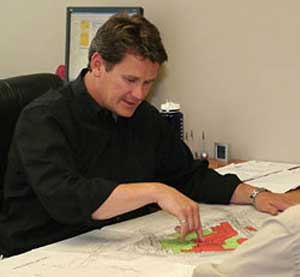Fire Protection Engineer
Tasks & duties

Fire protection engineers:
-
inspect buildings to decide which fire protection systems are required to meet the New Zealand Building Code such as fire alarms, sprinkler systems and fire resistant doors and walls
-
inspect and review building designs or plans and architects' drawings
-
read relevant documents and discuss issues with local authorities such as city councils and the New Zealand Fire Service
-
meet with builders, building owners, project managers and architects
-
design fire protection systems to comply with building codes and regulations and meet any special client requirements
-
use computer software to observe how a fire will spread and how people will try to exit a building
-
prepare and write reports to send to clients
-
may attend workshops, seminars or conferences, and give presentations
Skills & knowledge

Fire protection engineers need to have:
-
knowledge of passive fire protection systems such as fire-rated building materials and fire resistant doors
-
knowledge of active fire protection systems such as fire alarm systems, sprinkler systems, foam systems, gas flood systems and deluge systems
-
an understanding of fire and fire safety
-
knowledge of mechanical engineering
-
knowledge of relevant legislation such as the Resource Management Act, the New Zealand Building Code, and local by-laws and town planning regulations
-
knowledge of physics and maths
-
skill in analysing and interpreting information such as client requirements, plans, and designs
-
problem-solving skills
-
planning and organisational skills
-
communication skills
-
writing skills for producing reports
-
computer skills, including the ability to use computer-aided design (CAD) software
Entry requirements
To become a fire protection engineer you need a Bachelor of Engineering and a Masters in Fire Engineering.
Secondary education
Bursary or NCEA equivalent maths with statistics, maths with calculus, and science (especially physics and chemistry) are required to enter tertiary training.
More information about studying engineering and technology at secondary school is available in the following publication from the Institute of Professional Engineers New Zealand:
Training on the job
Skills are gained on the job. Fire protection engineers may attend courses, seminars, workshops and conferences to keep their skills up to date and to learn about new products. They are also expected to read journals and the engineering standard requirements for local authorities to keep up with trends in the industry.
After completing qualifications, gaining appropriate work experience (usually four to five years) and completing a practical competency assessment fire protection engineers may apply to the Institution of Professional Engineers of New Zealand (IPENZ) to become a chartered professional engineer (CPEng).
To maintain registration chartered engineers need to demonstrate their ability to practise and display evidence of undertaking professional development at least every five years.
Useful experience
Useful experience for fire protection engineers includes:
-
work on a building site
-
any work involving building engineering, architecture or the building construction industry
-
work with architects
-
work in the petrochemical industry
-
work associated with manufacturing and industrial processes
-
work for a fire protection organisation
-
work for an insurance company
-
community safety projects
-
fire-fighting or work in the NZ Fire Service
Related courses
Building Services Engineering
Fire Technology and Rescue Services
For more information, please refer to Career Services.
Document Actions
